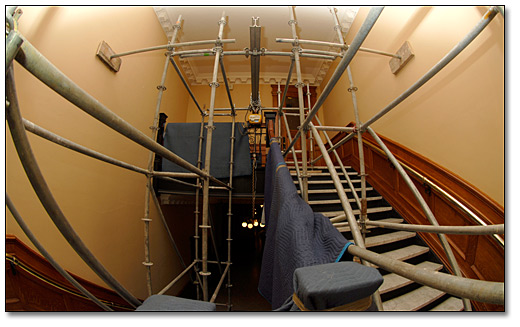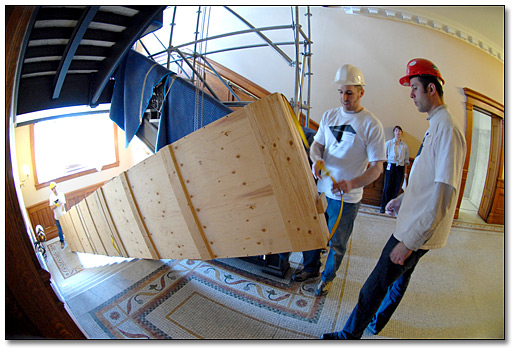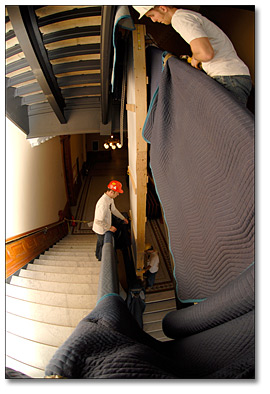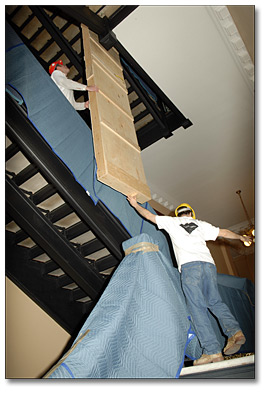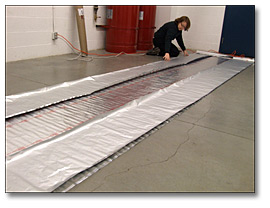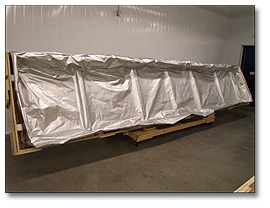
Packing and Transport to Storage
When we were unable to satisfactorily detach the first friable photograph from its metal substrate, we were faced with a new challenge: to crate and move the prints on their rigid supports to our off-site storage facility, Archives ONE.
Planning the relocation of the panoramas was an evolution of ideas, trial runs and returns to the drawing board. Significantly, support from management allowed us to bring in a contract conservator dedicated to the project and a professional art moving company who helped us to envision the logistics of the move, designed and fabricated the travel trays and crate, and provided moving services.
A plan was drawn up for the packing and transportation of the two panoramas and frames from the fourth floor at Queen’s Park to storage at Archives ONE.
Each unframed panorama had its own traveling tray, consisting of a shallow plywood box approximately 2.5” wider each dimension of the panorama. The panorama was secured to the bottom of the box with mending plates attached to its wooden strainer, and a semi-rigid plastic lid was screwed to the face of the box to protect the surface of the photograph.
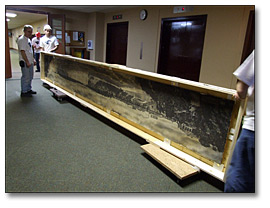
Inside View of a Panorama Traveling Tray
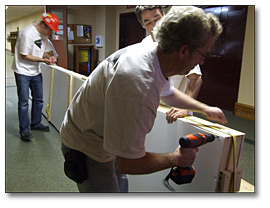
Sealing a Panorama Traveling Tray
The frames were moved separately to reduce the overall weight of each load and were wrapped with protective materials for moving.
Leaving Queen's Park
Scaffolding was erected on the west end stairs between the fourth and fifth floors to support an electric hoist.
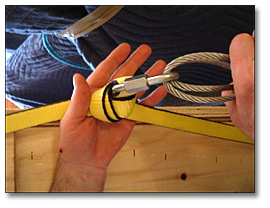
Hoist Chain
The panorama trays had a strap made out of a very strong woven material attached to one end that was hooked onto the hoist chain. A team of four movers lifted the panorama tray above the banister, and eased it into vertical position by raising the hoist chain. The tray was lowered vertically using controls on an electric switchboard, with crew members taking turns ‘leapfrogging’ down the stairs to steady the load as it reached ground floor.
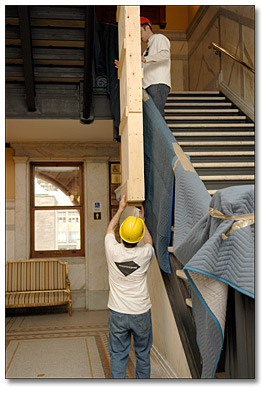
Guiding the Lowering of a Panorama in the Stairwell
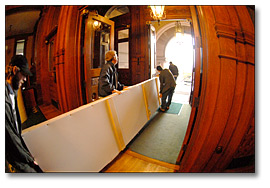
Moving a Panorama Through the
Front Doors of Queen's Park
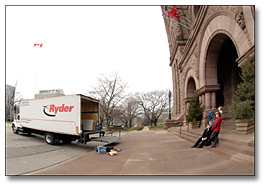
Moving Truck Waiting Outside Front
Doors of Queen's Park
The panoramas and frames exited the south-facing doors at the front of the building and were carried straight onto the back of the moving truck.
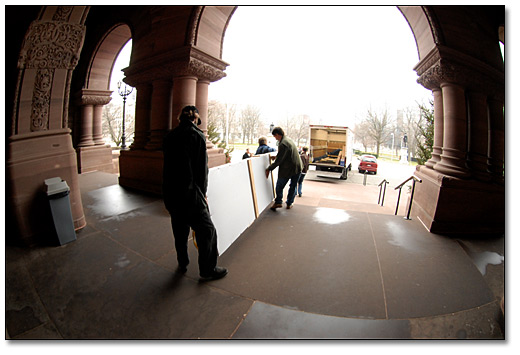
Moving a Panorama Through the Front Doors of Queen's Park
Into Their New Home
Upon arrival at Archives ONE, the trays and frames were brought into the loading dock for reframing and crating.
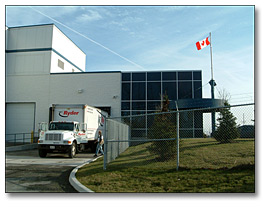
Truck with Panoramas at Archives ONE Loading Dock
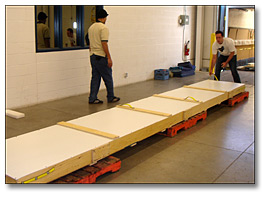
Panorama Tray Inside Archives ONE Loading Dock
The frames were unwrapped and laid face-down on foam blocks while the mending plates securing the first panorama in its traveling tray were removed.
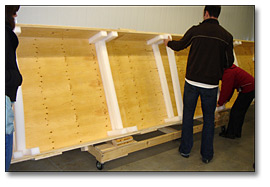
Inside View of the double crate
The art moving company designed the crate to house both framed panoramas, shown to the right containing foam supports to cushion the frames on both sides. The crate has its own dolly that provides adequate support and stability when the panoramas are inside, and is raised off the floor on wheels, a standard safeguard against ground level hazards.
Ensuring proper orientation of the panorama into its original frame, the panorama was laid facedown into the frame, a task that required all helpers.
It took a team of seven Archives’ conservators to transfer the panoramas into their frames, line the crate with a barrier film that would protect the framed photos from the unfinished wood of the crate which can emit harmful gases, then move the framed panoramas to their new home in the cool storage vault and secure them in the crate.
The panorama was secured into the frame with mending plates, and a protective sheet of semi-rigid plastic was applied to the back of the frame. The summer panorama was reframed first. It was then wheeled on a dolly supported by lots of hands to the cool storage room at the facility. It was placed face-first into the crate. The winter panorama came next, placed back-to-back with the first so it faced outward. Finally, the liner was sealed with double-sided tape to encapsulate the panoramas, and the crate lid screwed into place.
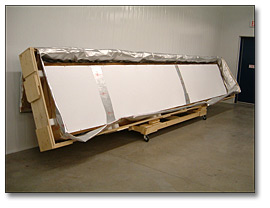
First Panorama into the crate in cool storage vault
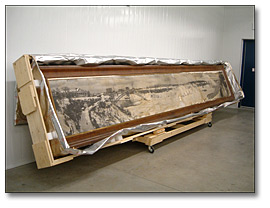
Both panoramas in their crate before sealing
Discovery | Initial Assessment | Removing the Varnish | Repairs
The Move | The Summer Panorama | The Winter Panorama
